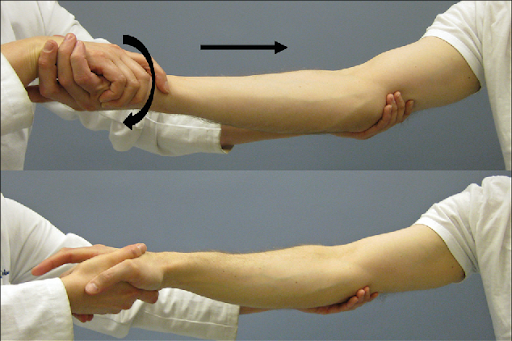When it comes to precision shaping and slicing, lateral cutting plays a vital role across countless industries. Whether it’s producing perfect sheets of material or intricate components for electronics, mastering lateral cutting ensures efficiency, consistency, and quality. It might sound like a simple task—cutting from the side—but the reality is much more complex and fascinating. Today, we dive into what lateral cutting is, its techniques, applications, and why it matters more than you might think.
What is Lateral Cutting?
Lateral cutting refers to the process of slicing or severing materials horizontally or from the side, as opposed to vertical or longitudinal cuts. It is used to create strips, panels, sheets, or specific geometric shapes, depending on the application. The term “lateral” simply means “side,” but in manufacturing, it often implies a high degree of precision, especially when dealing with delicate or high-value materials.
From manual methods like simple hand-held cutters to advanced laser-driven machines, lateral cutting adapts to a wide range of materials including metals, plastics, textiles, paper, and composites.
The Importance of Lateral Cutting in Modern Industries
Imagine manufacturing a roll of expensive carbon fiber composite material. A single inaccurate lateral cut could waste thousands of dollars’ worth of product. That’s why lateral cutting is critical—not just for quality control, but also for operational efficiency and material conservation.
Accurate lateral cutting reduces waste, ensures consistent product dimensions, enhances aesthetic appeal, and ultimately leads to better customer satisfaction. Without proper lateral cutting techniques, industries could suffer from higher production costs, defective products, and reputational damage.
Techniques Used in Lateral Cutting
Not all lateral cutting is the same. Depending on the material and desired outcome, different methods are used:
Manual Lateral Cutting
Manual lateral cutting involves using hand tools such as rotary cutters, shears, or knives. While it’s labor-intensive and less consistent compared to machine cutting, it’s perfect for low-volume, custom, or experimental work.
- Best suited for: Small workshops, prototypes, and artisanal manufacturing.
- Pros: Flexibility, low-cost setup.
- Cons: Time-consuming, prone to human error.
Machine-Based Lateral Cutting
This technique uses specialized machines equipped with blades or rollers that automatically slice materials laterally. Machines can be programmed to handle repetitive tasks with extreme precision and speed.
- Best suited for: High-volume manufacturing lines.
- Pros: Speed, consistency, minimal waste.
- Cons: Higher initial investment, requires trained operators.
Laser and Waterjet Lateral Cutting
For materials that are delicate or require intricate cuts, non-contact methods like lasers and waterjets are used. Lasers offer unmatched precision, while waterjets can cut through almost any material without generating heat.
- Best suited for: Electronics, aerospace, and medical industries.
- Pros: Highly precise, versatile.
- Cons: Higher operational costs, requires specialized maintenance.
Applications of Lateral Cutting
Lateral cutting’s versatility makes it indispensable across many sectors:
Textile Industry
In textiles, lateral cutting shapes rolls of fabric into panels for clothing, upholstery, and industrial applications. Precision is crucial to minimize fabric waste and ensure symmetrical patterns.
Paper and Packaging
In paper manufacturing, lateral cutters trim rolls into sheets and customize packaging materials. Corrugated boxes, labels, and cartons all depend on accurate lateral slicing.
Medical Device Manufacturing
Catheters, test strips, bandages, and many other medical supplies require careful lateral cutting to meet stringent health and safety standards.
Electronics and Semiconductor Industry
Printed circuit boards (PCBs), flexible circuits, and display panels often involve lateral cutting at microscopic scales to ensure devices function correctly.
Advantages of Effective Lateral Cutting
Companies that master lateral cutting enjoy several significant benefits:
- Material Efficiency: Precision cutting reduces wastage and optimizes material usage.
- Production Speed: Automated systems allow faster processing and higher output.
- Cost Savings: Reduced waste and efficient operations lead to lower production costs.
- Product Quality: Clean, accurate cuts improve product appearance and functionality.
- Customer Satisfaction: Consistent quality leads to fewer defects and better brand reputation.
When done right, lateral cutting becomes a silent yet powerful driver of business success.
Common Challenges in Lateral Cutting Processes
Despite its many benefits, lateral cutting comes with challenges:
- Blade Wear: Regular cutting can dull blades, leading to inconsistent results.
- Material Variability: Different materials may require different cutting speeds, pressures, or techniques.
- Alignment Issues: Improper material feeding can cause crooked or uneven cuts.
- Heat Effects: In laser cutting, heat can sometimes cause warping or material degradation.
Overcoming these challenges requires skilled operators, quality equipment, and routine maintenance schedules.
Innovations and Future Trends in Lateral Cutting
As technology advances, so too does the art and science of lateral cutting:
- AI and Machine Learning: Automated cutters are now using AI to adjust parameters on the fly for optimal results.
- Smart Sensors: Real-time monitoring of blade sharpness and material feed improves quality control.
- Eco-Friendly Cutting Technologies: Water-saving waterjets and energy-efficient lasers are reducing the environmental footprint.
- Miniaturization: As electronics shrink, so too must cutting techniques, pushing the boundaries of micro-scale lateral cutting.
The future of lateral cutting is smarter, greener, and even more precise.
Conclusion
Lateral cutting may seem like a straightforward task, but it plays a massive role in the efficiency, quality, and success of modern manufacturing processes. From textiles and paper to aerospace and electronics, industries depend on precise lateral cuts to bring their products to life. As techniques evolve and technologies advance, mastering the art of lateral cutting will remain crucial for any manufacturer striving for excellence.

